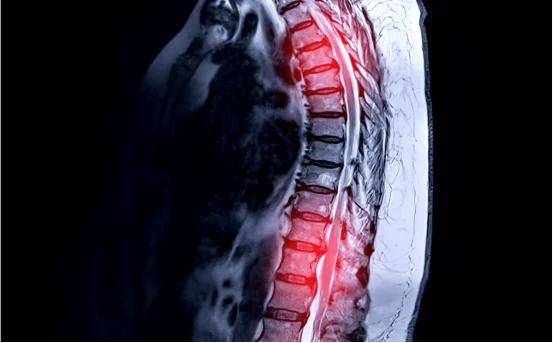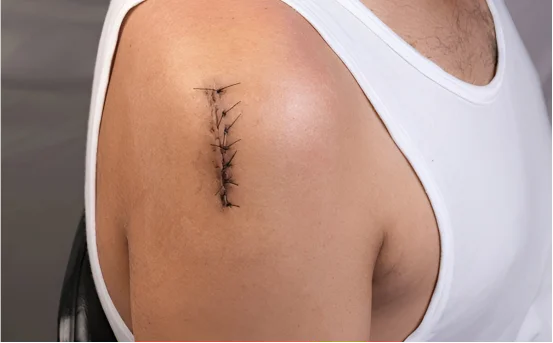Diagnosis for kyphoplasty surgery is a minimally invasive surgical procedure that helps restore the height and stability of collapsed vertebrae, often caused by spinal fractures due to osteoporosis, trauma, or cancer. However, not all patients with back pain or vertebral issues are candidates for kyphoplasty. Correct diagnosis is crucial to ensure the procedure is appropriate and beneficial.
This is where kyphoplasty surgery comes into play. Kyphoplasty is a minimally invasive procedure designed to stabilize fractured vertebrae, relieve pain, and, in many cases, restore lost vertebral height. It offers a faster recovery and less postoperative discomfort compared to traditional spine surgeries, making it an appealing option for many patients. However, kyphoplasty isn’t suitable for every case of back pain or spinal fracture.
What Is Kyphoplasty? A Brief Overview
Kyphoplasty involves inserting a balloon into a fractured vertebra to create space, followed by filling that space with a special bone cement to stabilize the bone. This procedure is especially effective in treating vertebral compression fractures (VCFs), which are small breaks in the vertebrae that cause them to collapse or compress.
These fractures often lead to :-
-
Sudden or severe back pain
-
Loss of height
-
Postural changes such as stooping or kyphosis (hunchback)
Why Is Diagnosis Important Before Kyphoplasty Surgery?
Kyphoplasty is not suitable for all spinal conditions. A thorough diagnosis ensures :-
-
The fracture is recent and responsive to kyphoplasty
-
There is no ongoing spinal infection
-
Neurological symptoms are evaluated
-
Other treatment options have been considered
A well-established diagnosis can prevent unnecessary surgery and guide patients toward the most effective treatment plan.
Common Conditions That May Lead to Kyphoplasty
Understanding the underlying causes of vertebral compression fractures can help identify if kyphoplasty is necessary. Common conditions include :-
Osteoporosis
This is the most frequent cause. Osteoporotic bones are fragile and prone to fractures, even with minimal trauma.
Spinal Trauma
Accidents or falls can cause vertebrae to collapse, especially in older adults.
Cancer (Spinal Metastasis)
Cancers that spread to the spine (like breast, lung, or prostate cancer) can weaken bones, making them vulnerable to fractures.
Signs and Symptoms That Warrant a Diagnostic Evaluation
If you’re experiencing any of the following, your doctor may initiate a diagnostic workup to determine if kyphoplasty is an option :-
-
Sudden back pain after bending, lifting, or minor trauma
-
Persistent, localized back pain not relieved by rest or medication
-
Pain that worsens when standing or walking
-
Noticeable loss of height or stooped posture
-
Difficulty with daily activities due to pain
Diagnosis for Kyphoplasty Surgery
Here’s a detailed look at the diagnostic steps involved:
Detailed Medical History
Your physician will begin with a thorough review of your :-
-
Pain symptoms and onset
-
Recent injuries or falls
-
Previous spinal conditions or surgeries
-
History of osteoporosis, cancer, or steroid use
-
Medication history
This helps narrow down potential causes of vertebral pain and guides further testing.
Physical Examination
Your doctor will :-
-
Check your spine for tenderness, alignment issues, or deformities
-
Test for signs of neurological impairment (e.g., numbness, weakness)
-
Evaluate your posture and flexibility
-
Assess mobility and pain with specific movements
Physical signs that raise suspicion of a compression fracture include mid-to-lower back tenderness and kyphotic posture.
Imaging Tests
Imaging is the cornerstone of diagnosis for kyphoplasty. Common modalities include :-
- X-rays
-
First step to visualize spinal alignment and detect vertebral collapse.
-
Helps identify fractures and degree of vertebral height loss.
- MRI (Magnetic Resonance Imaging)
-
Crucial for determining fracture age and distinguishing acute (recent) fractures from old, healed ones.
-
Shows bone marrow edema, which indicates a fresh fracture.
-
Evaluates any spinal cord compression or soft tissue involvement.
- CT Scan (Computed Tomography)
-
Provides detailed bone imaging.
-
Useful when MRI is not possible.
-
Helps plan the exact needle placement for the kyphoplasty procedure.
- Bone Scan (if needed)
-
Sometimes used to detect multiple fractures or identify cancer-related bone activity.
What Makes a Patient Eligible for Kyphoplasty?
After diagnostic evaluation, the following criteria are typically considered before recommending kyphoplasty :-
-
Confirmed vertebral compression fracture
-
Fracture is less than 8 weeks old
-
Significant back pain directly related to the fracture
-
Poor response to conservative treatment (bed rest, pain meds, bracing)
-
No spinal cord compression or instability
-
No active spinal infection
Patients with neurological deficits, such as numbness or weakness due to nerve compression, may require different or more extensive surgical intervention.
Conditions That May Exclude You from Kyphoplasty
Not every vertebral fracture patient is eligible. Kyphoplasty may not be appropriate in the following situations :-
-
Chronic or healed vertebral fractures (typically over 2–3 months old)
-
Active spine infection (osteomyelitis)
-
Blood clotting disorders
-
Severe spinal deformity not caused by a single fracture
-
Known allergies to the bone cement material
In such cases, other management options like bracing, physiotherapy, medications, or spinal fusion surgery may be considered.
Role of a Multidisciplinary Team in Diagnosis
A comprehensive diagnosis often involves input from several specialists :-
-
Orthopedic spine surgeon or neurosurgeon
-
Radiologist (to interpret imaging)
-
Endocrinologist (for managing osteoporosis)
-
Oncologist (if the fracture is cancer-related)
This multidisciplinary approach ensures the decision for kyphoplasty is well-informed and tailored to the patient’s overall health.
Diagnostic Timeline: How Long Does It Take?
Most patients can complete the diagnostic process within a few days to a week, especially if imaging facilities are readily available. Prompt diagnosis is essential, as kyphoplasty works best when performed within a few weeks of fracture onset.
What Happens After Diagnosis?
If kyphoplasty is deemed suitable :-
-
You’ll undergo preoperative assessments (blood tests, anesthesia evaluation)
-
Your surgeon will explain the procedure, risks, benefits, and recovery process
-
Consent will be taken before surgery is scheduled
If kyphoplasty is not suitable, you may be advised to :-
-
Use a back brace for support
-
Take medications (like bisphosphonates for osteoporosis)
-
Start physical therapy to strengthen the spine
-
Explore other pain relief methods like nerve blocks or vertebroplasty
Conclusion
A correct and timely diagnosis for kyphoplasty surgery is the cornerstone of successful treatment for vertebral compression fractures. The evaluation includes clinical history, physical exam, and advanced imaging to determine whether the procedure is safe, effective, and necessary for the patient.























